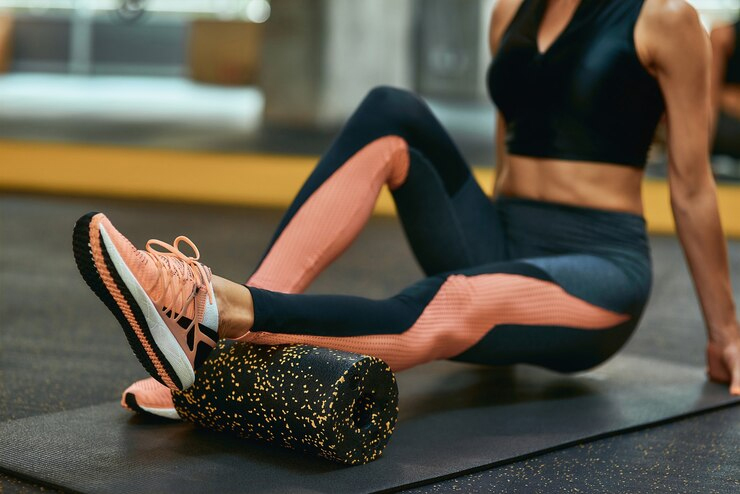
This article was published on: 11/11/22 4:52 AM
What are hamstrings?
Hamstrings are the tendons that attach the large thigh muscle to the bone and are located at the back of the thighs from the hip to just below the knee. The functions of the Hamstring depend upon the sports or the activities you perform daily. The hamstrings of athletes are exposed to heavy loads and therefore need to have the strength and flexibility to manage the load. The muscles are not used much while standing or walking, they very active during the activities like bending the knee, running, cycling, and climbing.
What does functional mean?
In a period of exercises, functional means to reproduce the function itself. Nowadays, people think that only exercises that reproduce the movement pattern are truly functional. We have to look out for the function itself to be functional. According to the specificity, it is correct that exercise needs to be specific to the function to be effective but there is more to function than just replicating the movement pattern.
What are the hamstring rehabilitation stretches and exercises?
Stretching exercises:
Hamstring stretching exercises should not be done immediately after an injury. You should at least wait for 2 to 4 days unless you feel relief in pain and swelling. Once you feel no pain while walking, that is the correct time to start with stretching exercises.
Straight Leg Hamstring stretches:
You need to place your foot on a table, keeping your leg straight and chest up. You can stretch your leg as far as you feel comfortable and stretch from the hip rather than the shoulders. This will help in healing the damaged tissue or even prevent you from further injuries.
Bent leg hamstring stretches:
Your physio will guide you to lie down on your back and pull the leg over in a way that you feel a gentle stretch at the back of your leg. You can practice this for 3 sets of 10 seconds each.
Pigeon Stretch:
People can perform this stretch when they are going through a pain-free range. We have to move our front leg with the knees at a 90-degree angle and straight out in the front with our back leg straight behind us. After that, we have to lean forward according to our range until we feel the stretch in our buttocks. The body should not be twisted during the stretching time. We have to hold for 30 seconds and 3 repetitions per side.
Doorway Stretch:
This stretch should be performed in a very gentle way in a pain-free range. Firstly, we have to perform this stretch near the doorway and place one leg on the frame and stretch the opposite leg through the doorway. And we have to try to keep our back with the natural arch. When you feel your hamstring relax, slowly move closer to the wall or doorframe. Remember that we have to hold for a minimum of 1 minute per side and preferably 2 repetitions per side.
Knee to Chest Stretch:
You have to move your knee towards your chest until you feel a stretch in your buttock zone. And about the other leg, you can keep it bent or straight. But remember that you have to hold for 30 seconds and 3 times repetitions per side.
Adductor Stretch with Full Squat:
You have to keep in your mind that this stretch has to be performed very gently in an acceptable range of pain. If you are not capable to do squat without assistance then take support of the door frame. Progress into a full squat with the right posture, you must keep your hips and knees in a proper alignment. You will find that your elbows can help you to push the knees outwards to improve the stretch of the adductor muscles. When you feel that your hamstring buttocks relax then slowly move closer to the floor. This stretch should be held at least for 1 minute.
Strengthening Exercises:
This type of exercise is involved in hamstring, lumbar extensor, buttocks, and many more. These exercises are only acceptable in a manner of pain felt. If you experience more than compassionate aggregate of pain please discontinue the exercises. The injury is likely too dreadful to begin a strengthening protocol. After you get the proper rhythm, you can start incorporating exercises like deadlifting.
Single leg hip extensions:
It is a more advanced version of a bridge. Using support for your elbows it should be alternate putting each heel to the floor. Keep in your mind good core stability and keep your hips and shoulders still. When your heel touches the ground the gluteal muscles and hamstrings have to work null to keep your body stable. These exercises will help you to keep in a position similar to the time when you are sprinting or running.
Bridge Exercise:
Your physio will ask you to lie on your back, bend your knees and push your hips upwards. Place your both the feet on the floor and push your hips awards with the help of your feets. Hold the position for a while and then lower it slowly.
Ball Bridge Exercise:
You start your exercise by lying down on your back with your feet on an exercise ball. Keep your pelvis level as you lift your hips and buttocks into the air. Pause a few seconds after that and return down to the ground. Keep in your mind that your pelvis wobbles as you move up and down. Keep your knee slight bend to activate the hamstring muscle more. Remember that you have performed 2-3 sets of 10 repetitions once a day.